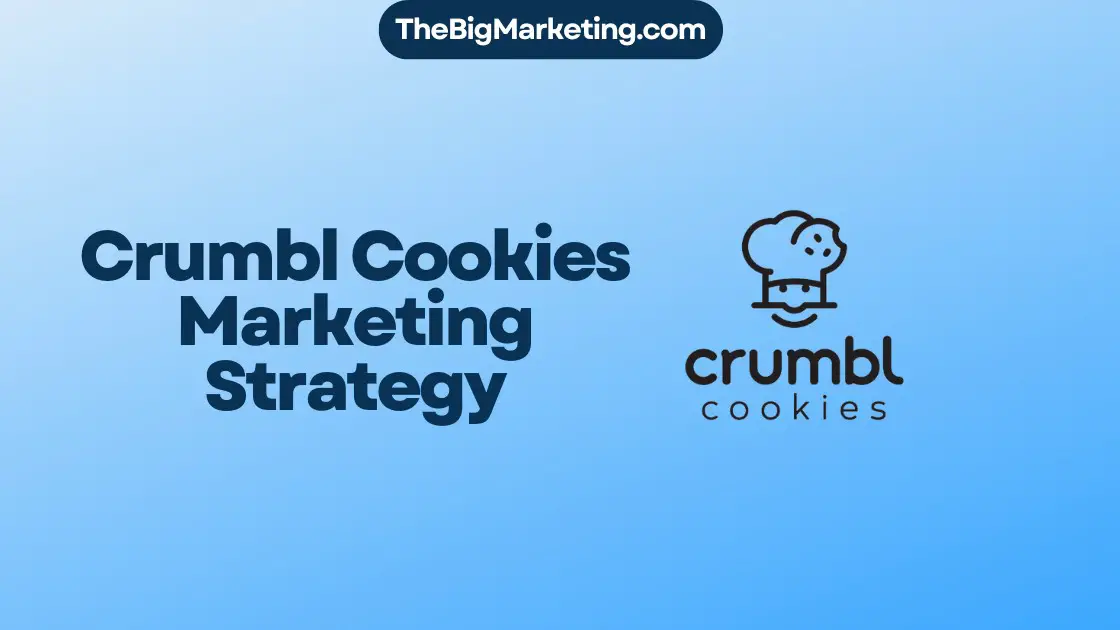In this case study, we will dive into Lacoste’s innovative marketing strategy and explore how the renowned brand has positioned itself in the market. With a focus on digital marketing and advertising campaigns, Lacoste has successfully captured the attention of its target audience. Let’s take a closer look at their approach and the impact it has had on their overall brand positioning.
Lacoste recognizes the importance of staying relevant in an ever-evolving digital landscape. To enhance their online growth and advance their digital marketing strategy, Lacoste partnered with Maison MRKT, a leading agency specializing in digital marketing solutions. This collaboration has resulted in a series of successful advertising campaigns, harnessing the power of digital platforms to reach a wider audience.
One noteworthy example is Lacoste’s recent TikTok campaign during the Black Friday-Cyber Monday shopping period. Leveraging the platform’s popularity among a new, youthful demographic, Lacoste created engaging and shareable content that resonated with their target audience. By strategically timing their campaign during a peak shopping period, Lacoste was able to drive significant brand awareness and increase sales.
With a strong focus on digital marketing, Lacoste has effectively utilized various channels to engage with their audience. Their social media presence, particularly on platforms like Instagram and TikTok, allows them to showcase their products and connect with consumers in an authentic and interactive manner. This approach has helped them build a loyal community of brand advocates.
Through their advertising campaigns, Lacoste has successfully communicated their brand values and positioned themselves as a leader in the fashion industry. Their marketing efforts have not only helped increase brand visibility but have also strengthened their reputation as a premium and stylish brand.
Key Takeaways:
- Lacoste has collaborated with Maison MRKT to enhance their online growth and advance their digital marketing strategy.
- The brand successfully launched a TikTok campaign during the Black Friday-Cyber Monday shopping period, targeting a youthful demographic.
- Lacoste’s focus on digital marketing and advertising campaigns has helped them build a strong brand presence.
- Through social media platforms like Instagram and TikTok, Lacoste has engaged with consumers and created a loyal community of brand advocates.
- Their marketing efforts have positioned Lacoste as a leader in the fashion industry, known for its premium and stylish offerings.
The History of Lacoste
Lacoste, established in 1933 by French tennis champion René Lacoste, is a renowned brand known for its rich history and iconic logo. The brand initially gained popularity for its innovative tennis apparel, which revolutionized the sport with its comfortable and functional design.
At the heart of Lacoste’s identity is its distinct logo featuring a crocodile, which pays homage to René Lacoste’s on-court nickname, “The Crocodile.” This logo has become synonymous with the brand’s commitment to elegance, authenticity, and sportive style.
Over the years, Lacoste has diversified its product range to cater to a broader audience. Today, the brand offers a wide selection of clothing, including polo shirts, t-shirts, dresses, and outerwear. Additionally, Lacoste has expanded into footwear, accessories, fragrances, and home goods, further establishing itself as a versatile lifestyle brand.
With its unwavering dedication to quality and meticulous attention to detail, Lacoste has solidified its position as a leader in the fashion industry, combining timeless elegance with a contemporary flair.
Lacoste Product Range:
| Product Category | Example Products |
|---|---|
| Clothing | Polo shirts, t-shirts, dresses, outerwear |
| Footwear | Sneakers, loafers, sandals |
| Accessories | Bags, belts, hats, sunglasses |
| Fragrances | Colognes, perfumes, body sprays |
| Home Goods | Towels, bedding, tableware |
Lacoste’s Target Audience
Lacoste has a well-defined target audience, primarily focusing on tennis and golf players. Their products are designed to cater to the specific needs and preferences of individuals participating in these sports. With a strategic brand positioning, Lacoste aims to capture the attention of young and athletic individuals who resonate with their values of elegance, style, and performance.
The Age Range:
The primary target age range for Lacoste is between 19 and 30 years old. This demographic includes young adults who are actively involved in sports, seeking high-quality apparel that reflects their active lifestyle. Lacoste understands the importance of connecting with this age group and creating products that appeal to their unique tastes and aspirations.
Recently, Lacoste has extended its target audience to include a slightly younger demographic, around the ages of 16 to 25. By expanding their reach, Lacoste aims to capture the attention of the next generation of tennis and golf enthusiasts, establishing long-lasting brand loyalty from an early stage.
Audience Segmentation:
Lacoste employs audience segmentation to further refine its marketing strategies and ensure that its products reach the right individuals. The brand recognizes that within the broader target audience, there are distinct segments with varying needs and preferences.
One segment of the Lacoste target audience consists of professional tennis players and golfers who not only wear the brand’s apparel on the court or course but also endorse the brand through their achievements and reputation. This segment plays a crucial role in influencing the purchasing decisions of aspiring athletes and fans.
Another segment includes recreational tennis and golf players who appreciate the brand’s performance-driven products. These individuals value the combination of style and functionality that Lacoste offers, allowing them to look and feel their best during their favorite sports activities.
Lastly, Lacoste also appeals to fashion-conscious individuals who admire the brand’s iconic crocodile logo and associate it with elegance and status. This segment of the audience values the brand’s heritage and recognizes the timeless appeal of Lacoste’s products beyond sports.
In Summary:
Lacoste’s target audience primarily consists of tennis and golf players within the age range of 19 to 30. However, the brand has also expanded its reach to include a slightly younger demographic between the ages of 16 to 25. Through audience segmentation, Lacoste caters to the specific needs and preferences of professional athletes, recreational players, and fashion-conscious individuals who appreciate the brand’s unique blend of style and performance.
Lacoste Pricing Strategy
When it comes to pricing, Lacoste has a diverse range of products catering to different budgets. Let’s take a closer look at their pricing strategy.
Lacoste Polo Shirt Price:
For men’s polo shirts, Lacoste offers a range of options with prices ranging from £55 to £200. The price variation is influenced by factors such as design, materials used, and any special editions or collaborations.
Similarly, women’s polo shirts from Lacoste are priced between £65 and £200. These prices reflect the quality, style, and exclusivity associated with the brand.
Lacoste Product Range Prices:
In addition to polo shirts, Lacoste offers a wide variety of products, including jackets and outerwear. The price range for these items is slightly higher, with prices for jackets ranging from £135 to £450.
It’s important to note that Lacoste’s pricing strategy reflects the brand’s commitment to delivering high-quality products that embody elegance, style, and sophistication. The pricing range allows customers to choose products that align with their preferences and budget.
| Product | Price Range |
|---|---|
| Men’s Polo Shirts | £55 – £200 |
| Women’s Polo Shirts | £65 – £200 |
| Jackets and Outerwear | £135 – £450 |
By offering a range of prices, Lacoste ensures that their products remain accessible to a wider audience while maintaining the brand’s reputation for quality and style. Whether you’re looking for a classic polo shirt or a statement jacket, Lacoste provides options that meet different price points without compromising on their commitment to excellence.
Lacoste Marketing and PR Strategy
Lacoste, a renowned brand in the fashion industry, employs various marketing and PR strategies to promote its products and increase brand awareness. The company leverages the influence of tennis and golf professionals to market its sportswear and activewear collections. By collaborating with these athletes, Lacoste not only establishes credibility and authenticity but also reaches a targeted audience of sports enthusiasts.
In addition to sports sponsorships, Lacoste has successfully utilized celebrity endorsements to enhance its brand visibility. By partnering with well-known personalities from various industries, the brand not only attracts attention but also gains increased exposure through the extensive reach of these celebrities’ fan bases.
To keep their marketing efforts innovative and captivating, Lacoste organizes fashion shows that showcase their latest collections. These events serve as platforms to engage with industry professionals and influencers, generating buzz around the brand’s new designs and generating media coverage.
Lacoste has recognized the power of entertainment media in reaching a wider audience. By integrating its brand into popular movies and TV shows, the company ensures that its products are seen and recognized by millions of viewers. This strategic approach allows Lacoste to capture the attention of potential customers who may have previously been unfamiliar with the brand.
Overall, Lacoste’s marketing and PR strategies, including collaborations with sports professionals, celebrity endorsements, fashion shows, and integration into popular entertainment media, have played a vital role in the brand’s success and continued growth.
| Marketing and PR Strategies | Impact |
|---|---|
| Collaboration with tennis and golf professionals | Establishes brand credibility, reaches targeted sports enthusiasts |
| Celebrity endorsements | Increases brand visibility through the influence of well-known personalities |
| Organizing fashion shows | Captivates industry professionals and generates media coverage |
| Integration into movies and TV shows | Reaches a wider audience and increases brand recognition |
Lacoste Distribution Channels
Lacoste utilizes multiple distribution channels to reach its customers. The brand sells its products through a combination of retail stores, department stores, and online platforms, ensuring accessibility and convenience for shoppers.
Retail Stores
Lacoste operates its own retail stores worldwide, offering a unique shopping experience for customers. These stores showcase the entire range of Lacoste products, allowing shoppers to browse and try on items before making a purchase. The retail stores also serve as a physical representation of the Lacoste brand and its commitment to quality and style.
Lacoste retail stores can be found in popular shopping destinations such as malls, high streets, and premium outlets. The knowledgeable and friendly staff provide personalized assistance, creating a welcoming environment for customers to explore the latest collections.
Department Stores
In addition to their own retail stores, Lacoste products are also available in department stores worldwide. This distribution channel provides wider reach and exposure to a diverse customer base. Lacoste collaborates with esteemed department stores known for their extensive product offerings, ensuring that Lacoste products are available alongside other reputable brands.
Lacoste’s presence in department stores allows customers to conveniently discover and purchase their desired Lacoste items while engaging in a broader shopping experience. The brand’s clothing, footwear, and accessories can be found in dedicated sections or within the relevant departments, offering a curated selection for customers to choose from.
Online Sales
Recognizing the growing trend of online shopping, Lacoste has established a strong presence in the e-commerce space. The brand’s official website serves as an online store, allowing customers to explore and purchase Lacoste products with ease. The website provides a user-friendly interface, detailed product descriptions, and secure payment options, ensuring a seamless online shopping experience.
Lacoste also partners with various e-commerce platforms, expanding its online reach and accessibility. These partnerships enable Lacoste products to be featured on well-established online marketplaces, attracting customers from around the world. The brand’s online presence extends to social media platforms, where customers can engage with Lacoste’s digital content and make purchases directly through integrated shopping features.
One of the advantages of online sales is that Lacoste offers an exclusive range of products that can only be purchased on their official websites and in their own stores. This strategy adds a touch of exclusivity to the brand’s online offerings, enticing customers to explore and purchase from the exclusive range.
Lacoste Distribution Channels Summary:
| Distribution Channels | Key Features |
|---|---|
| Retail Stores | Physical stores offering the complete range of Lacoste products |
| Department Stores | Collaborations with reputable department stores worldwide |
| Online Sales | Official website and partnerships with e-commerce platforms |
Lacoste Successes and Failures
While Lacoste has had its fair share of successes and failures, the brand has managed to maintain a strong reputation in the industry. One of the notable failures for Lacoste was when they made the decision to lower their prices, which resulted in compromised product quality. This move had a negative impact on their brand reputation, as customers associated Lacoste with lower-value products.
However, Lacoste was quick to learn from this failure and implemented a strategy to recover their brand reputation. They recognized that their target audience valued exclusivity and were willing to pay a premium for high-quality products. As a result, Lacoste raised their prices and refocused on delivering products that met the expectations of their customers.
This change in approach proved to be a success for Lacoste. By emphasizing exclusivity and premium offerings, they were able to regain customer trust and loyalty. Today, Lacoste is renowned for their commitment to quality and their ability to cater to a discerning consumer base.
Lacoste Successes and Failures
| Successes | Failures |
|---|---|
| Successfully recovered brand reputation | Lowered prices and compromised product quality |
| Focused on exclusivity and premium offerings | Initial negative impact on brand reputation |
| Regained customer trust and loyalty | Reoriented strategy to align with customer preferences |
Through their successes and failures, Lacoste has learned valuable lessons about the importance of maintaining brand reputation and delivering products that align with customer expectations. Their ability to adapt and recover from past failures showcases their resilience and commitment to meeting the needs of their audience.
Lacoste SWOT Analysis
When conducting a SWOT analysis of Lacoste, it is essential to consider the company’s strengths, weaknesses, opportunities, and threats.
Strengths
- Lacoste is renowned for its quality, craftsmanship, and attention to detail. This has contributed to the brand’s strong reputation and loyal customer base.
- The iconic crocodile logo is instantly recognizable and serves as a symbol of prestige and sophistication.
- Lacoste has a rich heritage and a long-standing history in the fashion industry, which adds to its credibility and appeal.
Weaknesses
- A significant weakness for Lacoste is its association with tennis and golf. While this has positioned the brand as a leader in sportswear, it may limit its appeal to a broader audience that does not participate in these sports.
- In some cases, Lacoste’s pricing may be perceived as high-end and exclusive, potentially deterring budget-conscious consumers.
Opportunities
- Lacoste has the opportunity to expand its product offerings beyond tennis and golf apparel, reaching a wider range of consumers with diverse lifestyle preferences.
- The rise of athleisure and casual fashion trends presents an opportunity for Lacoste to capitalize on its sportswear heritage while catering to the growing demand for versatile and comfortable clothing.
- With the increasing focus on sustainability in the fashion industry, Lacoste can position itself as a sustainable and environmentally-conscious brand, attracting environmentally-conscious consumers.
Threats
- Competition in the fashion industry is fierce, with numerous brands vying for market share and consumer attention. Lacoste faces the threat of losing customers to competitors who offer similar products.
- The evolving landscape of digital marketing and e-commerce presents challenges for Lacoste to effectively engage with consumers online and maintain a strong online presence.
- Fluctuations in raw material costs, currency exchange rates, and global economic conditions can pose threats to Lacoste’s profitability and overall business performance.
Lacoste’s Brand Evolution
Lacoste, a renowned fashion brand founded by René Lacoste in 1933, has undergone significant brand evolution over the years. With its iconic crocodile logo and a rich history in tennis apparel, Lacoste has expanded its product range and adapted to changing market trends to maintain its strong brand identity.
During its historical periods of growth and transformation, Lacoste has diversified its product lineup, offering a wide range of clothing, shoes, accessories, and even fragrances. This product diversification has allowed Lacoste to cater to a broader audience and establish its presence in various market segments.
Embracing digital transformation has been a crucial aspect of Lacoste’s brand evolution. The brand recognized the importance of digital marketing early on and has leveraged various online platforms to reach and engage with its target audience. Through effective digital marketing campaigns and strategic partnerships, Lacoste has successfully positioned itself as a contemporary and innovative brand.
Sustainable Practices and Environmental Responsibility
In addition to product diversification and digital transformation, Lacoste has also embraced sustainability practices as part of its brand evolution. The brand has made significant efforts to reduce its environmental impact by implementing sustainable sourcing and production methods.
Lacoste has committed to using eco-friendly materials and supporting initiatives that promote responsible manufacturing. By prioritizing sustainability, Lacoste appeals to increasingly conscious consumers who value ethical and environmentally friendly fashion choices.
Through these strategic initiatives and adaptations, Lacoste has successfully evolved its brand to stay relevant and competitive in the market. By combining product diversification with digital transformation and sustainability practices, Lacoste has solidified its position as an iconic brand with a global presence.
| Historical Periods | Key Features |
|---|---|
| The 1930s | Introduction of René Lacoste’s original tennis shirt |
| Mid-20th century | Expansion into international markets and collaborations with renowned designers |
| 21st century | Diversification into a wide range of products, including footwear, accessories, and fragrances |
Lacoste’s Web3 Journey
Lacoste has embraced the technological advancements of the Web3 era with its innovative UNDW3 project. At the forefront of this initiative is the Genesis Pass NFT collection, which marks the brand’s entry into the world of non-fungible tokens (NFTs). Through this project, Lacoste aims to connect with next-gen consumers and build a vibrant community around its brand.
Genesis Pass NFT Collection
The Genesis Pass NFT collection represents Lacoste’s first steps into the realm of digital collectibles. The collection features unique and limited-edition designs that tap into the brand’s iconic heritage and aesthetic. By leveraging NFT technology, Lacoste aims to offer an exclusive and immersive experience to its loyal customer base.
Through the Genesis Pass NFT collection, Lacoste is creating a new way for consumers to engage with the brand. Collectors can acquire these digital assets and showcase their ownership within the virtual space. This collection serves as a testament to Lacoste’s commitment to embracing emerging technologies and staying relevant in the digital age.
Community-Building and Collaboration
Alongside the Genesis Pass NFT collection, Lacoste is actively fostering a sense of community and collaboration within the Web3 space. The brand recognizes the importance of engaging with next-gen consumers on their preferred platforms and is exploring partnerships with influential figures and creators in the digital realm.
By collaborating with artists, musicians, and social media influencers, Lacoste is not only expanding its reach but also connecting with diverse and engaged audiences. These partnerships enable the brand to tap into the creativity and authenticity of these individuals, enhancing the overall brand experience and attracting new customers.
Embracing Social Media and New Technologies
In addition to NFTs and collaborations, Lacoste has also been actively leveraging social media platforms and new technologies to engage with its target audience. The brand has a strong presence on platforms like TikTok, Instagram, and Twitter, where it shares exclusive content and offers unique experiences to its followers.
Furthermore, Lacoste has been exploring emerging technologies, such as augmented reality (AR) and virtual reality (VR), to create immersive and interactive experiences for its customers. By embracing these technologies, the brand is able to provide a differentiated and memorable brand experience that sets it apart from its competitors.
Lacoste’s Web3 journey signifies its adaptability and forward-thinking approach to marketing and consumer engagement. By entering the world of NFTs, building a vibrant community, and embracing new technologies, the brand is setting itself up for success in the ever-evolving digital landscape.
Conclusion
Lacoste’s marketing strategy analysis reveals their success in adapting to the changing consumer landscape and attracting a younger audience. By leveraging innovative approaches and embracing new technologies, such as their foray into Web3, Lacoste demonstrates their commitment to staying relevant and driving future growth.
Moving forward, Lacoste plans to continuously evolve their marketing strategies, ensuring they remain at the forefront of the industry. By carefully analyzing market trends and consumer preferences, Lacoste will be able to tailor their campaigns and offerings to meet the evolving needs of their target audience.
With a strong focus on brand identity and quality, Lacoste is well-positioned to continue their upward trajectory. By leveraging their historical strengths and seizing new opportunities, Lacoste’s future plans involve expanding their reach, diversifying their product range, and solidifying their position as a leading player in the fashion industry.







